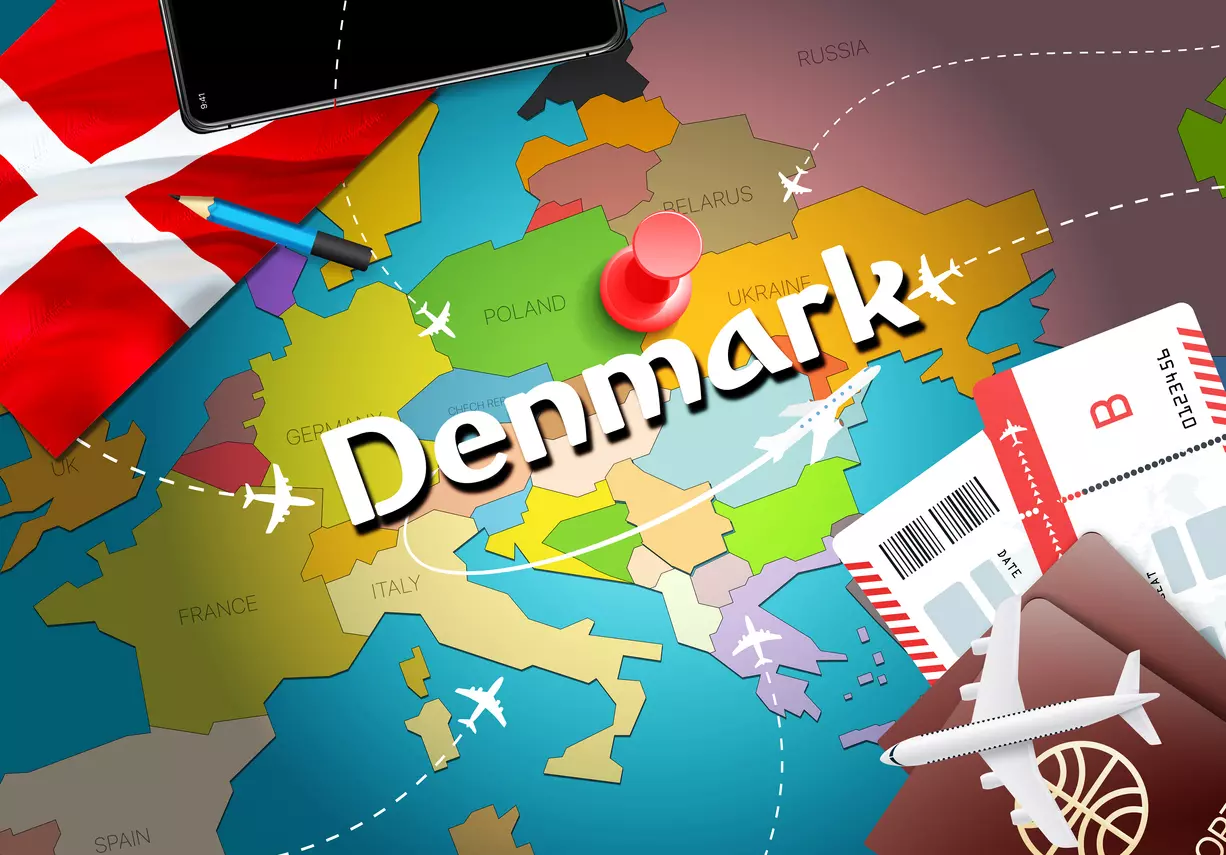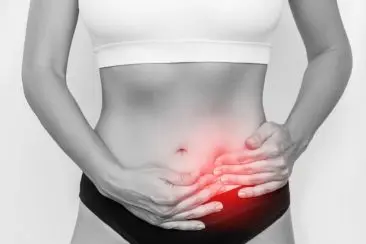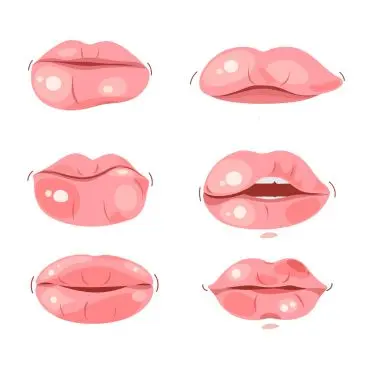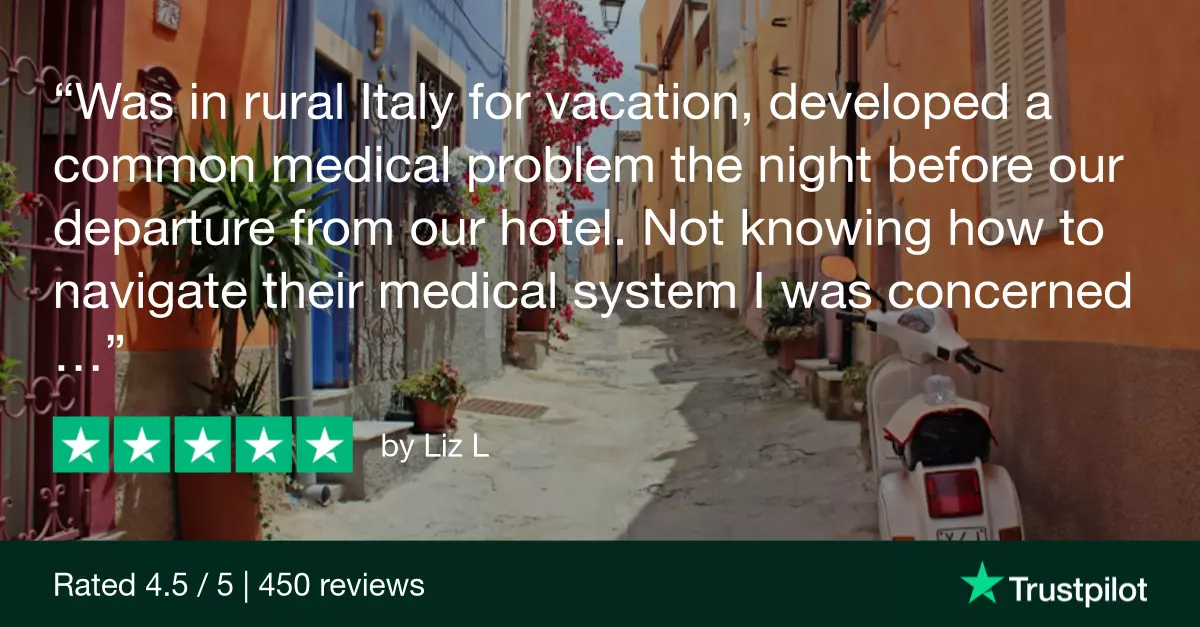Travel Tips for Visiting Denmark in 2025 (That Tourists Actually Google)
Thinking about visiting Denmark this year? Whether you want to see Viking ships, ride a bike through Copenhagen, or just try an authentic Danish pastry, it's a great place to explore.
But even though Denmark is safe and friendly, many travellers still get confused by small things that make a big difference. This guide answers the same questions that people search online every day before they arrive.
For example, did you know you cannot pay with cash in many shops? Or that you could get fined if you don't buy and scan the correct train ticket? Or that you should not walk across the road unless the light is green, even if no cars are coming? These are the little things that often surprise many people.
In 2025, Denmark operates smoothly but has its own set of rules. The water from the tap is safe and clean. Most people speak English well. However, it can be challenging to locate public toilets, and the weather can change rapidly, so it's essential to be prepared.
This guide gives simple, up-to-date tips that help you enjoy your trip without making common mistakes. It is not just a list of places to visit. It is real advice to help you feel more like a local and less like a lost tourist.
Denmark Essentials at a Glance
|
Category |
Details |
|
Currency |
Danish Krone (DKK) |
|
Language |
Danish (English widely spoken, especially in cities) |
|
Emergency Numbers |
112 (Police, Fire, Medical – EU-wide) |
|
Plug Type |
Type C & K (230V) |
|
Visa-Free Stay |
90 days (Schengen) |
|
ETIAS Requirement |
Expected late 2025 |
Why Visit Denmark in 2025
Denmark is a great place to visit in 2025. It has old castles, Viking stories, clean beaches, and friendly cities like Copenhagen and Aarhus. You can ride a bike almost anywhere, take easy train rides across the country, and enjoy safe streets and fresh air.
This year, Denmark is even easier for tourists. Many places now take contactless cards, even in small towns. There are more trains and better signs in English to help you get around. Many people speak English, making it easy to ask for help or order food.
Smaller towns and islands are also seeing an increase in visitors now, thanks to new travel routes and fun events like food festivals, music shows, and art days. These give you a chance to see what real Danish life is like.
Denmark also places a high value on the environment. Many hotels are eco-friendly, buses run on clean energy, and recycling is everywhere. When you visit, you also help support green travel.
Whether you want to learn about Vikings, try new foods, walk along the sea, or just relax in a cosy café, Denmark in 2025 is ready for you.
Do You Need to Speak Danish?
If you visit Denmark in 2025, you do not need to speak Danish to get around. In big cities like Copenhagen, Aarhus, and Odense, most people speak excellent English. You can order food, ask for assistance, or purchase tickets without any issues. Signs and menus are often in both Danish and English.
In smaller towns, some people may not speak much English, but they are usually kind and will try to help you. Most young people learn English at school, making it easy to communicate with them.
Even though you can speak English, learning a few Danish words is a good idea. It shows that you are polite and that you respect their language. Danes appreciate it when visitors try to say a few words in Danish, even if it's not perfect.
Useful words and phrases:
- Hej – Hello
- Tak – Thank you
- Undskyld – Excuse me, or sorry
- Taler du engelsk? – Do you speak English?
- Hvor er toilettet? – Where is the toilet?
What to Pack for Denmark
|
Item |
Why You Need It |
|
Plug adapter (Type C/K) |
Denmark uses different plug types from the UK |
|
Waterproof jacket |
Rain can happen any time of year, even in summer |
|
Layers of clothing |
Weather changes quickly, so dress in layers |
|
Comfortable shoes |
Great for walking and cycling through towns and cities |
|
Reusable water bottle |
Tap water is spotless and safe to drink everywhere |
|
Local SIM or eSIM |
Makes it easier to use maps, transport apps, and data |
|
Travel card or app |
For trains, buses, and bikes, many use digital systems |
|
Mobi Doctor access |
Handy for online doctor visits or prescription questions |
How to Pay in Denmark: Cards, Contactless, and Cash
In Denmark, most people pay with cards or their phones. In 2025, many shops, cafes, buses, and museums will no longer accept cash. You can use a contactless card, Apple Pay, or Google Pay almost everywhere. Even small food stands and bakeries usually have card machines.
If you are coming from the UK, make sure you bring a Visa or Mastercard. These are accepted the most. American Express is not as widely used.
You can also use apps to pay for trains, buses, and bikes. It is quick and easy, and many places prefer this over cash.
Good tips for paying in Denmark:
- Always have a contactless card with you
- Do not depend on cash – lots of places will not take it
- Use apps for travel and tickets when you can
Do you need to tip?
Tipping is not needed in Denmark. The price already includes service. But if someone gives excellent service, you can:
- At restaurants: Round up the bill
- In taxis: Round up to the nearest 10 or 20 kroner
- At hotels: You can give a small tip if staff help with bags or go out of their way to assist
Can You Drink the Tap Water in Denmark?
Yes, you can safely drink the tap water in Denmark. It is spotless and safe, no matter where you are — in a big city like Copenhagen or a small town. Most people in Denmark drink water straight from the tap every day.
Many people carry a reusable water bottle and refill it throughout the day. You can find places to refill bottles at airports, train stations, and some public buildings.
In restaurants, you can ask for tap water with your meal. Some places will give it to you for free, but others may offer bottled water instead. It is okay to ask — just say "vand fra hanen", which means water from the tap.
Bringing your bottle is a brilliant idea. It saves money, helps the planet, and you can refill it almost anywhere.
What to Expect from Public Toilets in Denmark
In Denmark, public toilets are usually clean and safe. Most of them are free to use, especially in parks, train stations, and museums. This is great news for visitors.
However, in busy areas such as city centres or tourist spots, you may find toilets that charge a small fee. This typically costs between 5 and 10 kroner, and you usually pay with a card or via contactless payment. You do not always need coins.
What to bring with you:
- A small bottle of hand sanitiser, in case there is no soap
- Some tissues or toilet paper, just to be safe
- A credit or debit card, for toilets that are not free
If you cannot find a public toilet, consider visiting a café or a fast-food establishment. It is polite to buy something small, such as a drink, if you want to use their facilities.
Look for signs that say 'toilet' or 'WC'. These are the words most places use in Denmark.
What to Wear in Denmark: Dress Codes and Style
People in Denmark like to dress simply and innovatively. Most people wear clothes in dark or plain colours, such as black, grey, or navy. You will not see many people wearing bright or flashy clothes in the city. Even when they dress casually, they still look neat.
The weather in Denmark can change quickly. It might be sunny one minute and rainy the next, even in summer. That is why most people wear layers and carry a jacket just in case.
What to pack:
- Comfortable shoes for walking and cycling
- Jumpers and light jackets you can take on or take off
- A waterproof jacket or a small umbrella
- Neat everyday clothes for cafés and restaurants
There are no strict rules for what to wear in most places, including churches and museums. But it is always good to look clean and respectful. In Denmark, it is better to dress simply than too fancy.
Closures on Sundays and Holidays in Denmark
In Denmark, most shops and supermarkets are open during the week and on Saturdays. But on Sundays, many of them close or have shorter hours. In big cities like Copenhagen, some supermarkets and small shops stay open, but in smaller towns, most places will be closed.
Pharmacies, banks, and post offices are usually closed on Sundays and public holidays. Restaurants and cafés are often open, especially in busy tourist areas; however, it's still a good idea to check their hours online before visiting.
Denmark does not have a midday break like a siesta. Most shops and places stay open in the afternoon. But some small shops or cafés may close early in the evening.
Things to remember:
- Try to do your shopping before Sunday
- Plan for Sundays and holidays, especially outside big cities
- Check opening times online to be sure a place is open.
Getting Around Denmark and Avoiding Fines
Travelling around Denmark is simple. Trains, buses, and the metro are clean, safe, and usually on time. You can easily go between cities like Copenhagen, Aarhus, and Odense. Most people use tickets on their phone or a travel card.
However, if you ride without the correct ticket, you can receive a hefty fine, up to 750 kroner, even if it was a mistake. You must purchase your ticket before boarding the train or metro. On buses, you can use a travel card or show your ticket to the driver.
Travel tips:
- Buy your ticket before your trip, using a machine or a phone app
- Make sure to tap your travel card if you are using one
- Always keep your ticket ready in case someone checks it
- If you are riding a bike, stay in the bike lanes and follow the rules
If you are driving a car, be careful in city centres. Some areas do not allow vehicles unless you have a special permit. Cameras check number plates, and you can receive a fine if you enter by mistake. Always check the driving rules for the place you are visiting.
Is Denmark Safe for Tourists in 2025?
Yes, Denmark is a very safe country to visit. Most people feel safe walking around, even at night, in big cities like Copenhagen and Aarhus. Violent crime is infrequent.
The main thing to watch out for is bikes. Many people in Denmark ride bikes, and they go pretty fast. Always look both ways before crossing the road, and do not walk in bike lanes.
Pickpocketing may not occur frequently, but it can still happen in busy areas. Keep your bag zipped, carry it in front of you, and do not leave your phone or wallet on tables when you sit outside at cafés.
Places to be extra careful:
- Copenhagen Central Station
- Aarhus train station
- Busy buses or tourist spots during festivals
If you ever need help, you can call 112 for the police, fire, or an ambulance. The police are friendly and speak English, so do not be afraid to ask for help.
Restaurant Etiquette and Dining Culture in Denmark
Eating out in Denmark is a calm and friendly experience. People enjoy taking their time to savour their food. The waiters are kind, but they may not visit your table very often. If you need something, it is okay to ask.
Good things to know:
- In cafés and small places, you usually order and pay at the counter
- In restaurants, sometimes you need to ask for the bill when you are ready to leave
- Tipping is not required, but you can round up the bill if the service was excellent
- Water is not always free. If you want tap water, ask for it politely
- In casual places, it is nice to take your tray back when you finish eating
Danes enjoy quiet meals and a cosy feeling, especially at dinner. If you are polite and relaxed, you will feel right at home.
What If You Get Sick in Denmark?
Denmark has outstanding healthcare. If you are from the UK or the EU, you can use your EHIC or GHIC card to get help at public hospitals or clinics. Many doctors speak English, but you might have to wait a while in busy places.
For minor problems, using an online doctor is often quicker and easier. Services like Mobi Doctor allow you to talk to a real doctor on your phone or computer, from anywhere in Denmark, even if you're staying in a small village or on a trip in the countryside.
You can use Mobi Doctor for:
- Colds and flu
- Infections or UTIs
- Sunburn or skin rashes
- Getting more medicine
- Travel health questions
Sun and Nature Safety in Denmark
|
Risk |
What to Do |
|
Sunburn |
Use sunscreen (SPF 30 or more), wear a hat, and stay in the shade during the hottest part of the day |
|
Wind and rain |
Bring warm layers and a waterproof jacket, even in summer |
|
Ticks |
Wear long sleeves in grassy areas and check your skin after walks |
|
Mosquito bites |
Use insect spray and wear long clothes in the evening |
|
Jellyfish |
Look for warning signs at the beach and do not touch them |
Denmark is a safe place, but it's always good to stay cautious and prepared.
Sun Safety and Heat Protection in Denmark
Denmark is not as hot as places like Italy, but in summer the sun can still be powerful, even when it feels cool or windy. You can still get sunburnt, especially if you spend the entire day outside.
To stay safe in the sun:
- Use sun cream (SPF 30 or more), and put it on your face, neck, and arms
- Wear sunglasses and a hat to protect your eyes and head
- Try to stay in the shade between 11 in the morning and 3 in the afternoon
- Put on more sun cream after swimming or sweating
- Drink water often, even if you are not thirsty
If you experience a severe sunburn or feel tired and dizzy due to the sun, you can use a service like Mobi Doctor to get help or a suitable cream.
Visa and Entry Rules for Denmark
In 2025, if you are from the UK, EU, US, Canada, or Australia, you do not need a visa to visit Denmark for up to 90 days. Denmark is part of the Schengen Area, so the same rules apply as in many other European countries.
From late 2025, individuals from outside the EU (including the UK) will be required to complete an ETIAS form before their trip. ETIAS is a brief online form that verifies safety and health. It is not a visa, but you must have it to enter.
Best Travel Apps for Denmark
- DSB: to check train times and buy tickets
- Rejseplanen: to plan bus, train, and metro trips
- DOT Tickets: for travel around Copenhagen
- Google Maps: for walking, cycling, and public transport
- Google Translate: to help with menus or signs in Danish
- Mobi Doctor: to speak to a doctor online if you feel unwell
These apps make it easier to travel around Denmark and find what you need during your trip.
Avoid These Tourist Mistakes in Denmark
- Not buying a ticket before you travel: You must purchase your train, bus, or metro ticket before boarding. If you do not, you can get a fine, even if it was an accident.
- Walking in bike lanes: Denmark has a lot of bikes. Bike lanes are for bikes only, and people ride them at a fast pace. Always walk on the pavement.
- Trying to pay with cash everywhere: Many shops and cafes only accept cards or phone payments. Always carry a bank card, just in case.
- Wearing the wrong clothes for the weather: Even in summer, it can rain or turn cold. Bring a jumper and a rain jacket.
- Leaving your tray behind: In cafés or food halls, it is polite to clear your tray and dispose of the rubbish in the bin after eating.
- Expecting chatty service: Staff in Denmark are generally friendly, but they tend to be quiet. They may not come over often, but you can always ask for help.
Best Day Trips from Major Cities in Denmark
From Copenhagen
- Roskilde: See Viking ships and a big old church called the cathedral
- Helsingør: Visit Kronborg Castle, the real castle from the story of Hamlet
- Malmö, Sweden: Go across the bridge and visit a new country in under one hour
From Aarhus:
- Ebeltoft: A small seaside town with old streets and a cool glass museum
- Silkebor: Great for nature walks, lakes, and boat trips
- Randers: Go to Randers Rainforest and see animals in warm indoor domes
From Odense:
- Kerteminde: A quiet fishing town with lovely beaches and a sea animal centre
- Egeskov Castle: A fairy-tale castle with gardens, a maze, and tree-top walks
- Svendborg: A cosy town by the sea, close to pretty islands you can visit
All of these places are easily accessible by train, bus, or car, and they are perfect for families, nature lovers, or anyone looking to explore more of Denmark.
Denmark Travel Checklist Before You Go
- Passport and a copy kept in a different place, just in case
- Travel insurance or an EHIC/GHIC card to get help if you feel unwell
- A Type C or K plug adapter to charge your phone or other devices
- Offline maps and a translation app in case you do not have internet
- Warm clothes and a waterproof jacket, even in summer
- Reusable water bottle, as tap water is clean and safe to drink
- Comfortable shoes for walking or riding bikes
- Bank card or phone payment app, as many places do not take cash
- Bug spray and remember to check for ticks after nature walks
- Access to Mobi Doctor, so you can speak to a doctor online if needed
This list will help you stay safe, dry, and ready for your trip to Denmark.
Denmark Travel FAQ (2025 Edition)
Can I use EU prescription in Denmark?
Yes. Pharmacies in Denmark accept EU prescriptions if they meet cross-border standards. Mobi Doctor issues prescriptions that are valid across Denmark.
Is it safe to drink tap water in Denmark?
Yes. Tap water in Denmark is consistently clean and safe to drink, readily available throughout the country, from urban areas to rural regions. Most locals drink it daily.
Do I need to tip in restaurants in Denmark?
No, tipping is not required in Denmark. Service is included in the bill. If you’d like to tip, consider rounding up the total or leaving 5–10% for excellent service.
Are pharmacies open on Sundays in Denmark?
Most pharmacies in Denmark are closed on Sundays and holidays. However, one emergency pharmacy per area remains open. The nearest one is listed on every pharmacy door.
Can I travel without a ticket on Danish trains or buses?
No. You must have a valid ticket before boarding. Travelling without one, even by mistake, can result in a fine of 750 DKK or more.
Need Medical Help While Travelling in Denmark?
If you feel sick while visiting Denmark, Mobi Doctor is a fast and easy way to get help. You can talk to a real doctor online using your phone or computer.
You do not need to wait at a clinic or worry about speaking Danish. The doctor can send a prescription that works in all EU countries, including Denmark. You can then visit any pharmacy to obtain your medicine.
Mobi Doctor can help with:
- Coughs, colds, and sore throats
- Infections or UTIs
- Rashes, bites, or allergies
- Getting more medicine if you run out
- Health questions while travelling
It is private, simple, and works from anywhere in Denmark.






